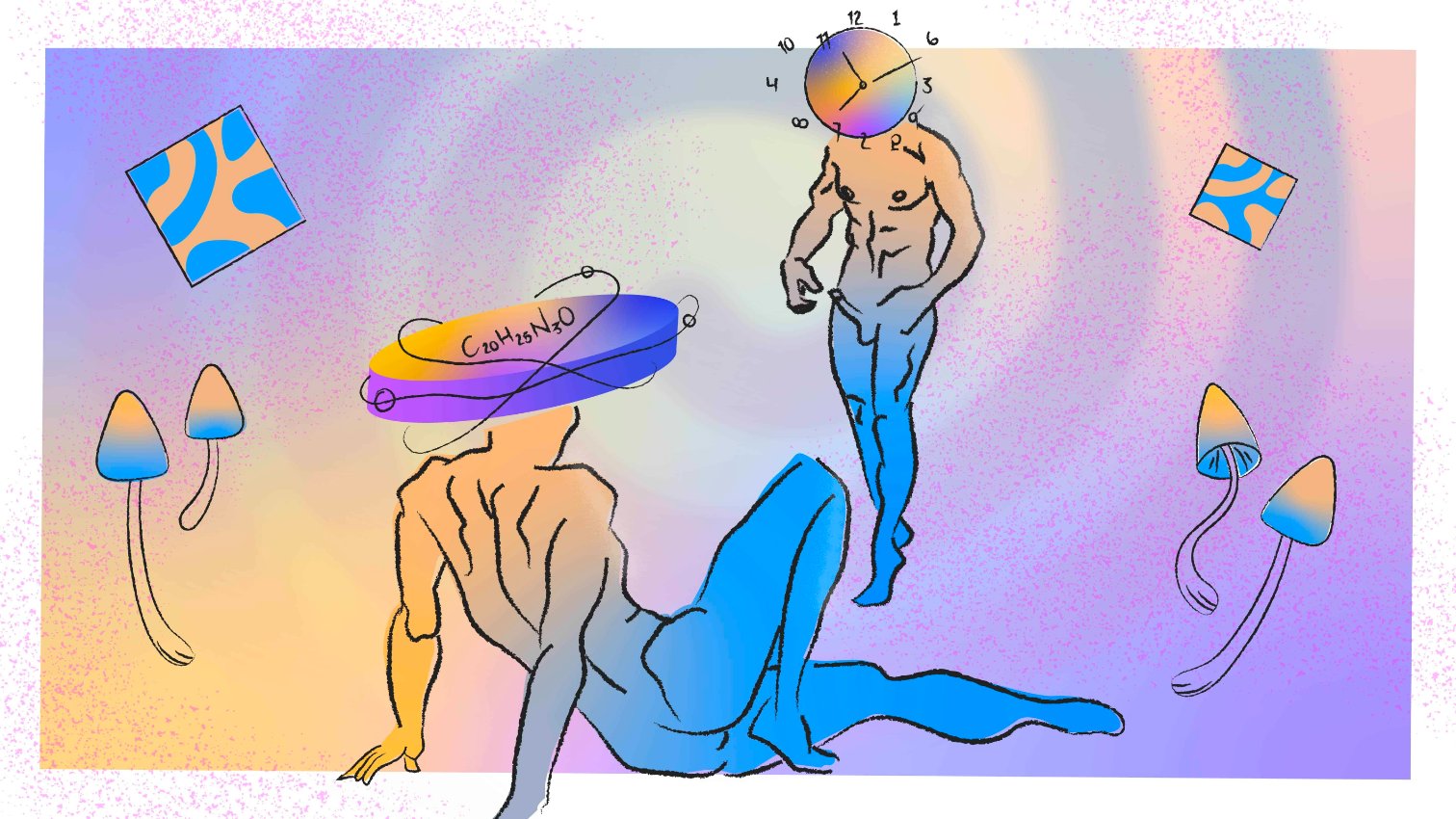
Quick Facts 
LSD, also known as acid, blotter, lucy, or tabs, is a powerful hallucinogenic drug that alters perception and consciousness.
Emojis like 🌀 can be used to represent LSD and the distorted sensory experiences and hallucinations experienced during an LSD trip. 🍄 is primarily used for psilocybin mushrooms, also known as “magic mushrooms” or “shrooms,” but can sometimes also represent psychedelic drugs in general, including LSD.
🌀 LSD is primarily a psychedelic drug, meaning it mainly affects perception, consciousness, and mood in a unique and often profound way. However, it can also be seen as an “uplifting” drug due to its stimulating effects.
🔴 There is a risk that taking LSD can set off mental health problems or make them worse for people already experiencing them. If you have an underlying mental health condition or you are in a bad mood, feeling depressed or worried avoid taking LSD, as taking LSD can lead to a bad ‘trip’. There have been instances where people harm themselves due to bad ‘trips’.
What is it?
LSD (lysergic acid diethylamide) is a synthetic substance discovered in the 1940s. It is one of the most potent hallucinogens and is used in both therapeutic and recreational settings.
What does it look like?
LSD typically comes in the following forms:
- Blotter paper: Small square papers impregnated with LSD, often with colorful patterns or symbols.
- Liquid: LSD can also be found as a clear, colorless liquid that is dropped onto sugar cubes or directly onto the tongue.
- Tablets and capsules: Though less common, LSD can also be found in tablet or capsule form.
How is it used?
LSD is most commonly consumed orally:
- Blotter paper is placed on or under the tongue and dissolves.
- Liquid can be dropped directly onto the tongue or mixed into a drink.
- Tablets or capsules are swallowed directly.
How does it feel?

- Intense visual and auditory hallucinations
- Altered perception of time
- Enhanced sensory experiences
- Euphoria and a sense of profound insight
- Altered perception of reality
LSD and Sex
LSD is sometimes used to enhance sexual experience and intimacy. The hallucinogenic effects can make experiences more intense and emotional. However, LSD can also lead to confusion and impaired judgment.
Safer Sex with LSD
- Talk to your partner(s) beforehand to ensure you are on the same page, and bring protection such as condoms, lubricants, gloves, and cleaning supplies for sex toys.
- You might also have another strategy for safer sex, such as regularly testing yourself and your partner(s).
- Be aware that LSD can affect your judgment and ability to make decisions that would normally feel good for you
Side Effects and Long-term Consequences
LSD can cause both short-term and long-term side effects:
- Short-term effects: Unwanted sensory disturbances, negative emotions or thoughts, mental confusion, anxiety, nausea, dizziness, tremors, and increased heart rate.
- Long-term effects: Flashbacks, prolonged psychological stress, and potential triggering of latent mental illness.
Overdose Management

- Severe hallucinations
- Panic attacks
- Confusion and disorientation
- Elevated body temperature
- Heart palpitations
If an overdose is suspected:
- Try to keep the person calm and safe.
- Create a secure and comfortable environment.
- Seek medical help if symptoms are severe or persistent. You can call 112 in Sweden, the number works in all the EU countries
🔗 Addiction Risk
LSD has a low risk for physical dependence but can lead to psychological dependence. Users may develop a desire to re-experience the intense effects.
LSD and other Drugs
Combining LSD with other drugs can be dangerous:
- Alcohol can increase the risk of negative psychological effects.
- Stimulants
(such as methamphetamine, amphetamine, cocaine, MDMA, etc.) can increase anxiety and paranoia.
- Depressants
(such as benzodiazepines, GHB/GBL, alcohol, etc.) can enhance the hallucinogenic effects and lead to confusion.
LSD and HIV treatment (ART)
LSD does not directly affect HIV treatment but can impair adherence to medication by altering the perception of time and judgment.
🕐 Take your HIV medications regularly. Set an alarm or reminder on your phone if needed. Take substances and HIV medications at different times to reduce the risk of side effects. Use low doses of substances when taking medications simultaneously.
🗣️ Talk to your doctor or an expert about interactions between HIV medication and LSD.


